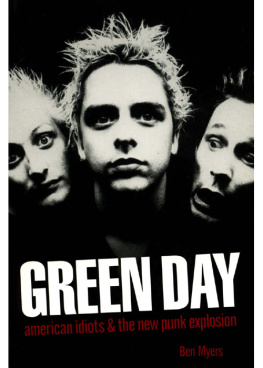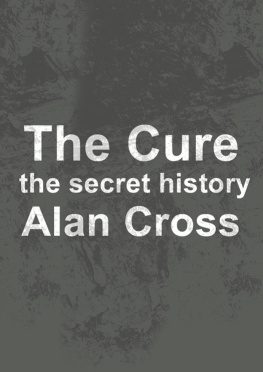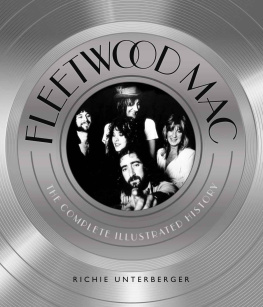The Cure FAQ
Backbeat Books
An imprint of Globe Pequot, the trade division of The Rowman & Littlefield Publishing Group, Inc.
4501 Forbes Blvd., Ste. 200
Lanham, MD 20706
www.rowman.com
Distributed by NATIONAL BOOK NETWORK
Copyright 2021 by Christian Gerard
The FAQ series was conceived by Robert Rodriguez and developed with Stuart Shea.
Book design by Snow Creative Services
All rights reserved. No part of this book may be reproduced in any form or by any electronic or mechanical means, including information storage and retrieval systems, without written permission from the publisher, except by a reviewer who may quote passages in a review.
British Library Cataloguing in Publication Information available
Library of Congress Cataloging-in-Publication Data
Names: Gerard, Christian (Music journalist) author.
Title: The Cure FAQ : all that's left to know about the most heartbreakingly excellent rock band the world has ever known / Christian Gerard.
Description: Lanham : Backbeat, 2020. | Series: FAQ | Includes bibliographical references and index.
Identifiers: LCCN 2020003410 (print) | LCCN 2020003411 (ebook) | ISBN 9781617137075 (paperback) | ISBN 9781493053988 (epub)
Subjects: LCSH: Cure (Musical group) | Rock musicEnglandHistory and criticism. | Post-punk musicEnglandHistory and criticism. | Gothic rock musicEnglandHistory and criticism.
Classification: LCC ML421.C87 G47 2020 (print) | LCC ML421.C87 (ebook) | DDC 782.42166092/2 [B]dc23
LC record available at https://lccn.loc.gov/2020003410
LC ebook record available at https://lccn.loc.gov/2020003411
 The paper used in this publication meets the minimum requirements of American National Standard for Information SciencesPermanence of Paper for Printed Library Materials, ANSI/NISO Z39.48-1992
The paper used in this publication meets the minimum requirements of American National Standard for Information SciencesPermanence of Paper for Printed Library Materials, ANSI/NISO Z39.48-1992
To my beloved Mitchel Scot Judkins... you left us far too soon. I miss you more every day. I will never let go of you in my heart. Transformer man, my Gemini. I know you are at peace, and we shall be together. Love forever.
To my mother Linda, the kindest person Ive ever known. Her love and support have meant everything. To my late father Sam, whose faith in me never wavered even when mine was gone completely.
Contents
Guide
F irst, I have to admit to being late in discovering the Cure. I know, its shocking. Im sorry! But if its any consolation, my first introduction to the band was pretty excellent!
In 1984, I got my first job as an assistant engineer (which is English for tea boy!) in West Side Studios in West Londonowned by the successful production duo of Clive Langer and Alan Winstanley (Madness, Dexys Midnight Runners, Teardrop Explodes, Elvis Costello and later on Bush). About a year later, the studio was booked for a day by Fiction Records, The Cures record label, for a remix of The Cures perfect pop song Boys Dont Cry.
At the start of the session, legendary Cure producer Dave Allen handed me a tape box containing the precious twenty-four-track master of Boys Dont Cry and asked me to load it up on the tape machine. On opening the box I was met with a strong musty smell and saw that the tape appeared to be discolored and stained with mold. I turned around, with no doubt a shocked expression, to Dave, who said, I know! It has supposedly been professionally cleaned! The studio tech guy was very skeptical about playing this nasty-looking tape on his treasured Studer A800 tape machine, but he conceded, being as it belonged to the Cure.
After threading the tape on the machine, I tentatively pressed play and expected the sound to be anything but pristinebut to the surprise of all present, Boys Dont Cry popped out of the speakers, sounding none the worse for wear and eager to be remixed. It sounded amazingespecially those iconic clean rhythm guitars!
The reason for the tapes precarious state turned out to be a leaky washing machine in Chris Parrys basement. Chris was the somewhat relaxed boss of Fiction Records and the man who signed the Cure and helped them toward goth stardom.
Chris had great musical taste because he also signed Siouxsie and the Banshees and the Jam to Polydor Records before signing the Cure to Fiction after Polydor didnt share his enthusiasm for the young Robert Smith et al. Chris had apparently thought that keeping some of the bands precious multitrack tapes in the basement near his washing machine was just fine.
After the Boys Dont Cry remix, my next interaction with the Cure happened a couple years later when Id graduated from making the tea to actually making records. In 1986, Id worked with producer Dave Allen at West Side Studios as an engineer on three tracks for a newly signed band to Geffen Records (home to Guns N Roses, Mtley Cre, and Aerosmith). The Chameleons, from Manchester, were flown to Antigua to sign a massive deal with Geffen, who had great expectations for the band to be the next U2. This they might have been, except they broke up before their first album for Geffen, Strange Times, got released!
Unfortunately (or fortunately in hindsight), in 1985, Dave Allen had persuaded me to leave West Side Studios to go freelance so I could engineer the Chameleons for him. It was a bit early in my engineering career to be waltzing off into the more precarious world of freelance engineering. At that time, I didnt have a big discography of hits that Id worked on under my belt. So, very kindly, Dave asked the nice folks at Fiction if they could help me find some work, as Id stuck my neck out on the line to do the Chameleons album with him. Fiction was already managing Dave as a producer, finding him other work in between Cure projects.
Chris Parry was yachting around the world at this point and would be for a couple more years, so it was a long time before I finally got to meet him. In the meantime, Fiction found me some cool work, and my career in the more pop/electronic field was flourishing. When Chris arrived back on dry land, Id just finished Neneh Cherrys Raw Like Sushi album, and her biggest hit, Buffalo Stance, had done very nicely in the chartsand it was my first coproduction.
When I met with Chris Parry for the first time, hed just heard the finished Neneh Cherry album and liked it a lotso much so that he managed to snag a share of the publishing on it! Chris said, Ive got to get you to meet Robertmaybe you guys could work together on something. This sounded like a pretty great idea to me!
My first meeting with Robert Smith was a little strange and intimidating to be honest. I seem to remember Robert sitting at ninety degrees to me and barely making eye contact. He talked mainly through Chris rather than directly to me. As weird as it was, the idea of my doing a radio-friendly mix of Lullaby came out of that first meeting.
Working on Lullaby was a big moment for me. Like the rest of Disintegration, it was beautifully recorded by Dave Allen and sonically gorgeous. I was nervous because I worked on the mix alone for a long time, and Robert came in to listen only at the end. When Robert came in, he was completely different than he had been at our first meetinghe was relaxed and perfectly communicative. He liked the mix, and I dont remember any drastic changes apart from his vocal levels. Robert loves his vocals to be loud!
I also made the extended version of Lullaby that would later appear on Mixed Up during the same studio session. When Robert listened to it for the first time, I was tense because Id added a few little bubbly synthesizer lines, and I wasnt sure if this crossed some kind of delicate mixer/artist boundary. Would my trivial musical offerings be accepted or immediately trashed with a warning never to pollute a work of perfection that obviously needed not another note? It was a huge relief to see Roberts eyebrows lift, followed by a nod of approval my way at the moment my first synthesizer part crossed the tapes play head in the mix.






 The paper used in this publication meets the minimum requirements of American National Standard for Information SciencesPermanence of Paper for Printed Library Materials, ANSI/NISO Z39.48-1992
The paper used in this publication meets the minimum requirements of American National Standard for Information SciencesPermanence of Paper for Printed Library Materials, ANSI/NISO Z39.48-1992